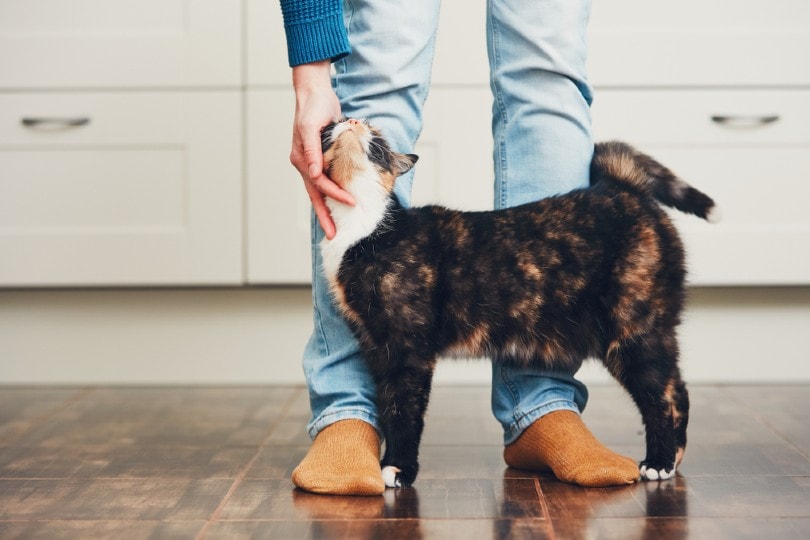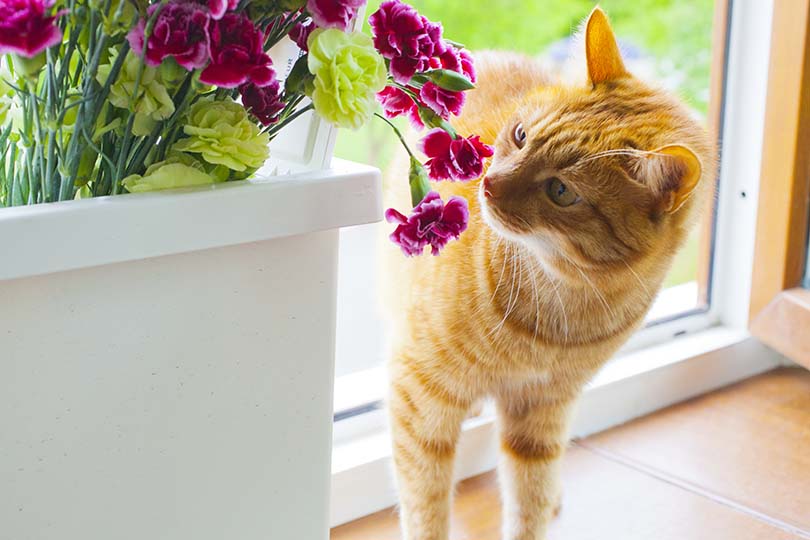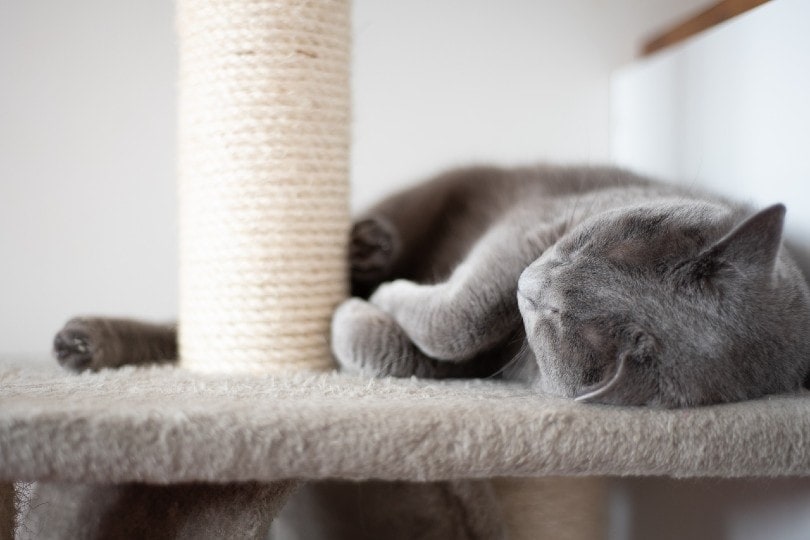
Cats are often a mystery to us. They often seem more like wild animals compared to dogs. Much of this rests with the fact we don’t have the long history with felines as we do with canines. Humans domesticated dogs between 20,000–40,000 years ago,1 whereas cats chose to live with us about 9,500 years ago.2
The Fédération Cynologique Internationale (FCI) recognizes 350 dog breeds,3 compared to the 73 cat breeds of The International Cat Association (TICA).4 Therefore, the ancestral instin1cts of your pet are on display in more ways than you may think.
The first step toward understanding your pet is understanding how it views its world. Even though we share 90% of our DNA with felines,5 profound differences exist. Humans rely heavily on vision to navigate our world. We can see more colors and greater distances than cats.6 However, they beat us when it comes to detecting motion or seeing in the dark.
It makes evolutionary sense for a nocturnal animal that hunts primarily by stalking and pouncing. A predator only needs to see what’s close by to make a kill. Keen color vision isn’t necessary when an animal’s active at night. Felines aren’t always successful hunters. Experts consider the Black-footed Cat the best of the bunch at 60%.7 On the other hand, a lone lion scores only 20% of the time.
Their sense of smell is the most important one for cats. They can pick up smell much better than people with 40 times more scent receptors than we have.8 If your pet comes on the run when you open a can of food, that’s why. The nose knows.

Prey Drive
Felines are obligate carnivores, getting most of their nutrition from animal protein. They are hunters and will act instinctively if they see a mouse scamper by or a bird fly to a feeder. The same thing applies to a hamster or canary you may own. Your cat doesn’t know the difference between another pet and prey. Therefore, you should be cautious when handling other animals in your home.
Communication
These instincts sometimes clash with owners when a cat is just being a cat. We mentioned the importance of smell. That comes into play with scent marking by rubbing against you. It’s what drives some unneutered cats to spray. Remember that it’s less costly and improves survival if another animal knows a territory is already occupied by picking up on the scent than fighting for it.
Other ways to communicate include scratching. Cats have scent glands between the pads on their paws. Scratching leaves a visual and olfactory calling card to other felines in the area. Unfortunately, that sometimes includes your furniture or carpet.
Remember that a cat’s claws are its primary defense. It’s necessary insurance against a pet sneaking outside and facing a dog or other foe. If your pet scratches things it shouldn’t, it’s far better to redirect the behavior to something appropriate, like a scratching post dusted with catnip. Interestingly, research has shown that cats prefer standing posts with the added incentive to use them.
Sleep & Activity Patterns
Perhaps the quintessential image of a cat is sleeping curled up on a bed. There’s no getting away from the fact that felines sleep a lot. They rest about 16 hours daily, sometimes approaching 18 hours as they get older. Sleep serves the same purpose for them as it does for us. It rests and recovers our minds and bodies. Interestingly, cats often adjust their schedule to match their owners if they work outside of the home.
The other instinct with cats and sleep involves their activity patterns. Wild felines are typically nocturnal since that’s when their prey is active. Remember that cats have superior night vision that helps them explore the world at night. Some pets develop bad habits and are active while you’re trying to sleep. They could be hungry or simply bored, especially if they’ve been alone all day.
The essential thing to remember is not to give in to this behavior—it will only reinforce it. Cats are intelligent animals. It won’t take them too long to figure out that disturbing your rest gets them what they want. Instead, keep your pet occupied during the day with play. Interactive toys are an excellent way to keep them engaged.
You should also feed your pet in the evening so that it won’t want you to get up to get fed. A full belly will ensure a good night’s sleep for both of you. If worse comes to worst, it’s not bad or mean to close the bedroom door at night.

Dog vs Cat People
We see many traits of ancestral feline instincts when we compare so-called dog people versus cat lovers. It never fails to surprise us how polarizing this topic often is with some individuals. Both animals share a common ancestor, with the two diverging about 55 million years ago and 5.5 million years ago from hominids or early humans.
Nevertheless, we share roughly 90% of our DNA with cats and only 84% with dogs. Yet, our preference for pets shows up in our personalities. Research using the Sixteen Personality Factors Questionnaire (16PF) test has found that dog people are more likely to be sociable and group-oriented. On the other hand, cat people tend to be shyer and more restrained than the former.
These findings make sense when you consider that canines are more likely to live in groups, whereas felines tend to be loners. These data also provide good fodder for pondering your cat’s behavior in relation to your own. You may find it quite insightful.
Final Thoughts
The apparent closeness to the cat’s wild side is striking when you observe it. Instincts drive many behaviors in felines. That’s true with canines and humans. Another factor is our relationship with cats. They acted instinctively from the start, being the excellent mousers they are. We didn’t selectively breed them as prolifically as we did dogs, which fulfilled many roles for people.
Canines benefitted from their association with people. Felines, not so much. After all, they do the hunting. It’s a question that has puzzled scientists for ages. That leaves us with one conclusion: cats chose to be with us, and for that, we are forever grateful.
Featured Image Credit: Jaromir Chalabala, Shutterstock







